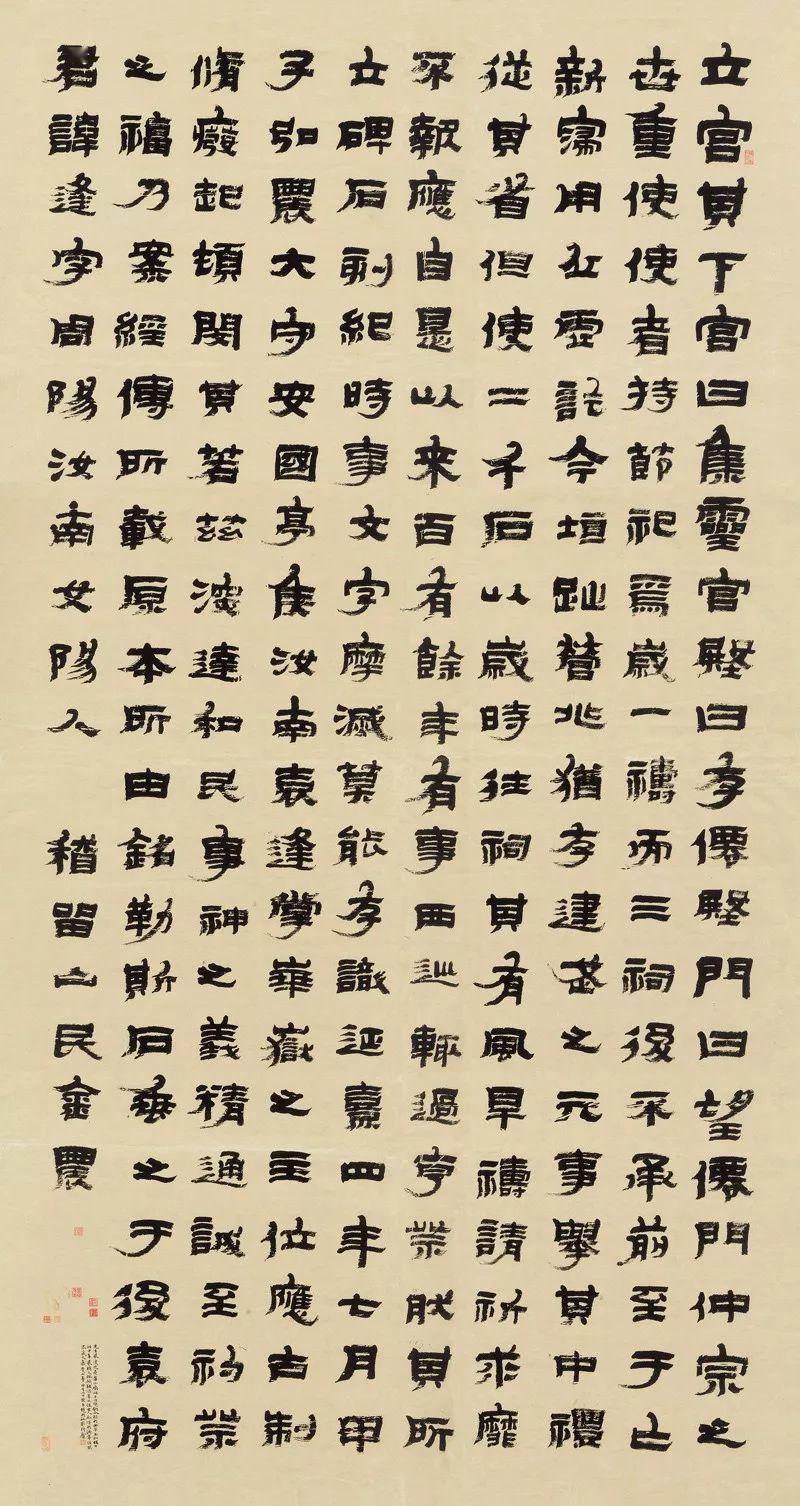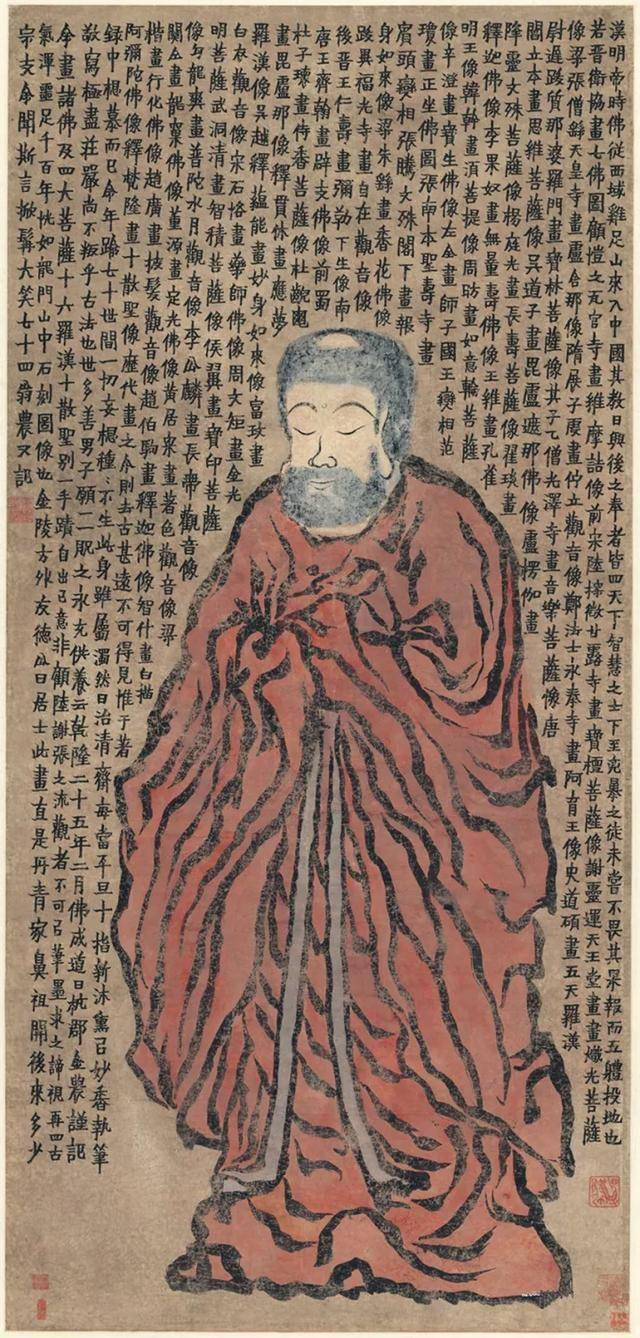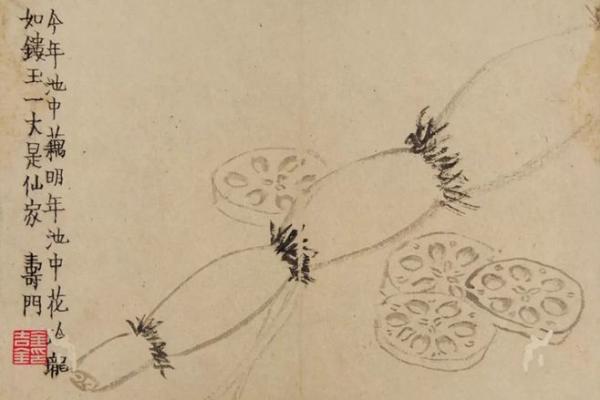
Jin Nong (1687-1763) was a key figure among the "Eight Eccentrics of Yangzhou" during the Qing Dynasty. He was a master in poetry, calligraphy, painting, seal carving, as well as in appreciation and collection.
This article is a new article on painting written by the well-known painter Liao Lu, who is over 80 years old. He believes that Jin Nong is a true pioneer of the historical transformation in the history of traditional Chinese painting. His works of art are increasingly attracting the attention of contemporary people. They have inspired the current art world in many ways, especially in terms of sinking down and sinking deeper, which means being willing to be lonely and keeping calm.
The calligraphy and paintings of Jin Nong from the Qing Dynasty always evoke a sense of weight, like a stone tablet. Facing his works, one's energy sinks not only to the dantian (Dantian) but also to the Yongquan acupoints on the soles of the feet, as if rooted there, unable to escape. Jin Nong, a calligrapher and painter who emerged from the study of epigraphy, is increasingly captivating contemporary audiences because his artworks nurture the modern within the primitive, while the modern retains the essence of the primitive.

Jin Nong Self-Portrait
The tradition of erecting monuments to record people's lives has long existed in Chinese history. Judging from the inscriptions that have survived, the earliest inscriptions were mostly carried out by folk calligraphers. It wasn't until the Tang Dynasty that calligraphers began to participate, such as Ouyang Xun's "Nine-Storey Palace Stele," Yan Zhenqing's "Duobao Pagoda Stele," "Yan Family Temple Stele," and "Guo Family Temple Stele," and Liu Gongquan's "Xuanmiao Pagoda Stele." While this is a cultural phenomenon in the history of calligraphy, epigraphy didn't actually develop a strong culture of learning and inheritance before the late Ming Dynasty. This is related to the cultural legacy of the imperial examination system after the Tang Dynasty, which relied on calligraphy to gain official positions.

Jin Nong's Imitation of Han Li
Regarding epigraphy, the majority of rubbings we see today are from the Ming Dynasty and later, such as the "Xia Cheng Stele," "Cao Quan Stele," and "Li Qi Stele." In the Ming dynasty, the mainstream of calligraphy transmission and study was still based on the "Book of Calligraphy," a trend that persisted into the late Ming and early Qing dynasties. Jin Nong was a literati painter inspired by epigraphy. Objectively, this was related to the waning cultural spirit of the aristocracy and the rising cultural spirit of the common people at the time. Compared to previous literati painters, the "Eight Eccentrics of Yangzhou" in painting history were a relatively typical group of common people, even considered eccentric at the time, hence the name "Eight Eccentrics of Yangzhou."
Among the "Eight Eccentrics of Yangzhou," Jin Nong stands out as an outlier among the eccentrics. Yet, Jin Nong possessed profound scholarship, remained unmoved by change, and embraced a quiet, steadfast attitude. He not only drew inspiration from epigraphic studies, but also drew inspiration from them. The "Cuan Baozi" and "Cuan Longyan" are both examples of ancient Yi scripts unearthed in the Qujing area of southwestern Yunnan and northeastern China. These clumsy, solemn inscriptions are a strange style, closer to the primitive forms of writing than the elegant and graceful epigraphic inscriptions of central and southern China. This is related to Jin Nong's unpretentious temperament, his willingness to accept solitude and poverty. In modern times, amidst the growing vitality of a new cultural concept, he has become a model of public attention. This is inevitable: the primitive breeds the modern, while the modern retains the genes of the primitive.
Before Jin Nong, although Shitao put forward the bold statement that "brush and ink should follow the times" and led the trend of the times, there were few true followers. Looking back, Jin Nong may be the true pioneer of the historical transformation in the history of traditional Chinese painting.

Jin Nong's Buddha Paintings
Primitive and modern are always two ends of a balance in historical development, like dumbbells in sports, neither side can be neglected, and the balance cannot be lost. In today's increasingly vibrant modern and contemporary art scene, aren't many artists drawing inspiration from various primitive forms to achieve their success? This is also why Jin Nong's simple and unpretentious works are increasingly attracting attention from modern people. In the history of calligraphy after Jin Nong, epigraphy has increasingly attracted attention from later generations, with the emergence of figures such as Zhao Zhiqian and Wu Changshuo, and even more prominently, Qi Baishi.
Sink down, sink down again. Learning from Jin Nong means being willing to be alone and to hold your breath. The illustrious Su Dongpo once said in his "On Liu Hou": "The great achievements of the world lie between the ability to endure and the inability to endure." Endurance is the spiritual core of sinking down again and again.
My good friend Mr. Zhou Sicong once said that frivolous things floating on the water will eventually be carried away by the current, and only things that sink will exist forever.
In the art world we witness today, haven't many of the darlings of the era been eliminated by history? Their elimination is hardly a cause for regret. History's lessons are worth heeding. This generation re-entered university after 1976, and after graduating three to five years later, they were fortunate enough to fill the academic leadership positions of the veteran artists who tragically passed away in the 1960s and 1970s. However, after gaining power, some, far from respecting themselves and truly devoting themselves to society, became self-aggrandizing, toying with power and boasting that masters started here. There are even some empty theorists who boast of countless eloquence and numerous publications, but which of their words are truly their own? Haven't these become historical jokes? Therefore, in today's world of vying for attention, we need, even more than ever, the spirit of sinking down, like Jin Nong, to sink down again and again.

Simple portrait of Jin Nong (Liaolu painting)
Throughout human history, no one has achieved anything without lifelong, unremitting effort. I often say, "Aspiration requires virtue, and ambition, even more so, requires humility." Those who aspire to great things must start small. By applying the same dedication to achieving great things, one can achieve many things. Jin Nong's pragmatic spirit of sinking deeper and deeper offers many insights for today.
I recall Mr. Guan Liang inscribed the four characters "plain, simple, and innocent" for me. "Ping" means a normal mind, "dan" means calm as water, "tian" means the unity of man and nature, and "zhen" means the sincerity of treating others with kindness. Doesn't this inheritance and development of action, transforming action into inaction, transcend and transcend the implicit spirit of aristocratic culture? Reflected in traditional Chinese painting, Jin Nong's artwork was a pioneer in this historic shift in traditional Chinese painting, and Qi Baishi, who was greatly influenced by Jin Nong, was a standard-bearer of his era.
